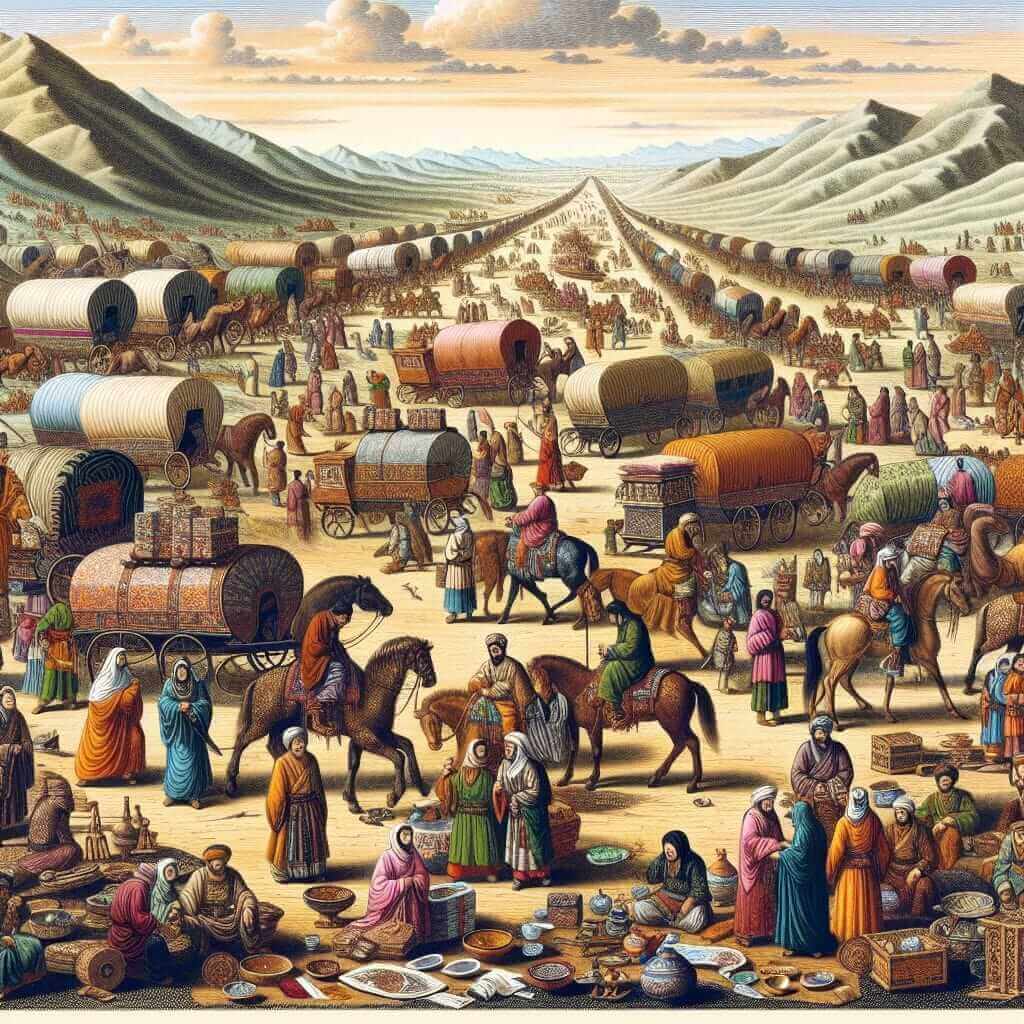When preparing for the IELTS Reading section, understanding historical analysis, such as the global trade and cultural exchange, can be incredibly beneficial. This topic has appeared multiple times over the years in the IELTS exam due to its relevance and depth. Prospects of encountering a similar theme in a future test are high.
This article will guide you through a comprehensive reading practice, tailored to suit the IELTS format, enhancing your ability to tackle such topics effectively.
IELTS Practice Reading Passage: Historical Analysis of Global Trade and Cultural Exchange
Practice Passage
Global trade and cultural exchange have significantly impacted societies throughout history. These connections between different civilizations have led to economic growth, cultural enrichment, and technological advancement. Over the centuries, trade routes such as the Silk Road and maritime pathways have facilitated the exchange of goods, ideas, and traditions.
The Silk Road, for instance, was more than just a trade route; it was a conduit of cultural exchange that connected the East and West. Spanning from China to the Mediterranean, this network of trade routes enabled the flow of silk, spices, precious metals, and other valuable goods. More importantly, it also facilitated the exchange of knowledge, religion, and culture, leaving a lasting impact on the civilizations it touched.
Similarly, maritime trade routes played a crucial role in global trade and cultural exchanges. The ancient maritime trade linked various parts of the world, including Africa, the Middle East, South Asia, and Southeast Asia. These sea routes were instrumental in the dissemination of technologies, religious beliefs, and cultural practices. Notably, the spread of Islam and Buddhism was greatly influenced by these maritime exchanges.
Historical analysis of these trade routes reveals that globalization is not a modern phenomenon. The interconnectedness of different regions through trade and cultural exchange has been occurring for centuries. By examining these historical connections, we gain insights into the continued importance of global trade and cultural exchange in shaping contemporary societies.

Reading Questions
Multiple Choice
-
What was the primary significance of the Silk Road beyond trade?
- A. It was a pathway for military expansions.
- B. It facilitated cultural and knowledge exchange.
- C. It was used mainly for the trade of spices.
- D. It connected only China and Europe.
-
How did maritime trade routes affect global cultural exchange?
- A. They primarily focused on the exchange of technologies.
- B. They were not significant in spreading religious beliefs.
- C. They connected various parts of the world including Africa, South Asia, and Southeast Asia.
- D. They were only used for the transportation of precious metals.
True/False/Not Given
-
The Silk Road connected China to the Mediterranean via a single, unchanging route.
-
Maritime trade routes influenced the spread of Islam and Buddhism.
-
Globalization is considered a recent phenomenon as per historical analysis.
Answer Key
- B. The primary significance of the Silk Road was its role in facilitating cultural and knowledge exchange.
- C. Maritime trade routes connected various parts of the world including Africa, South Asia, and Southeast Asia.
- False. The Silk Road was a network of trade routes, not a single unchanging route.
- True. Maritime trade routes did influence the spread of Islam and Buddhism.
- False. Globalization is not considered a recent phenomenon in historical analysis.
Common Mistakes to Avoid
- Misinterpreting Question Types: Ensure you understand the difference between identifying true statements, multiple choice, and matching information questions.
- Skimming vs Scanning: Use skimming to get the gist of the passage and scanning to find specific information.
- Overlooking Details: Pay close attention to details that might change the meaning of a statement.
Vocabulary
- Conduit (/ˈkɒndjuɪt/): noun – A channel for conveying water or other fluid.
- e.g., The Silk Road acted as a conduit for cultural exchange.
- Dissemination (/dɪˌsɛmɪˈneɪʃn/): noun – The act of spreading something, especially information, widely.
- e.g., The maritime trade routes aided in the dissemination of religious beliefs.
Grammar Focus
- Relative Clauses: Useful for adding extra information about a noun without starting a new sentence.
- Example: “The Silk Road, which connected multiple regions, was a major trade route.”
Conclusion
Understanding the historical analysis of global trade and cultural exchange can significantly bolster your performance in the IELTS Reading section. By recognizing the themes, focusing on key details, and expanding your vocabulary, you enhance your ability to decode and comprehend reading passages effectively.
For further practice, consider exploring related topics such as the historical significance of the Silk Road and cultural impacts of global trade. Additionally, reviewing the historical analysis of ancient trade routes and their impacts can provide more depth and context to your understanding.
Remember, consistent practice and a strategic approach are keys to excelling in the reading section of the IELTS exam.